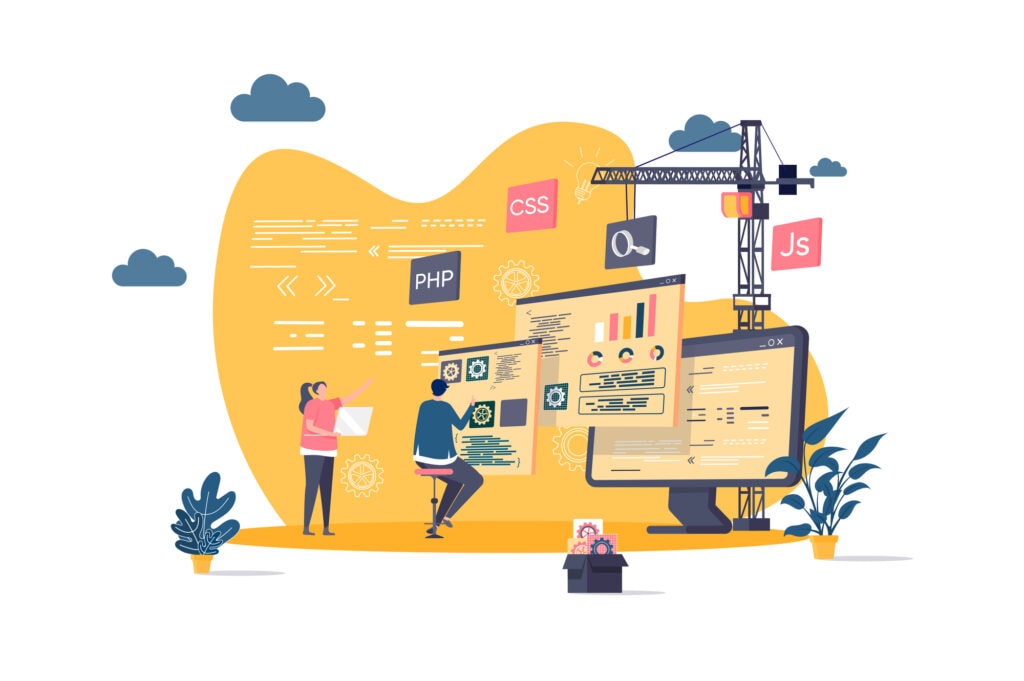Businesses invest in websites to provide marketing platforms for a credibility boost, where they want to impact user preferences and reach a bigger audience. A decent website popping up in organic search results will automatically build viewer trust.
The Necessity of a Solid Web Presence
Building brand loyalty through a solid web presence is vital for a strong connection with the audience. Engaging with consumers builds trust, promotes the brand, shares updates, and provides valuable content to users. Nowadays, social media, online reviews, and email marketing are extensively popular among brands to compete and sustain their status through leading-edge approaches. It depends broadly on the product or service type a brand is selling. A web presence enables customer sustenance and product support and provides corporate information. Corporate identity and brand awareness are created through these forums.
Importance of an Attractive, Functional, and Up-to-Date Website
As online markets get more competitive, visits to websites tend to increase. The design must attract users and the content must be engaging. Key factors to creating a better website include keeping content simple and to the point, keeping it up-to-date, and providing a call to action. Web content is essential for keeping users engaged, and so is the design.
Furthermore, constant upgrading is required to ensure that the website looks modern and professional. The design and color palette should remain the same on all platforms to give a positive image across. It is important to ensure that the website remains functional, and users are proactively responding. Consistency is essential when it comes to building and maintaining a new web platform, which will form the basis for a strong user experience.
How to Approach a New Website Investment: One-time Fee vs. Monthly Subscription
There is a wide variety of shapes, sizes, and pricing strategies for websites. However, two of the most commonly used pricing structures for websites include one-time projects and monthly subscription fees. The choice of which strategy is suitable relies on business needs, financial conditions, and businesses marketing strategy.
Apart from the initial requirements, awareness regarding resource costs and time is also vital. Generally, it is easier for a small business to come to a decision as opposed to an established business.
The rates for one-time projects range from $2,000 to $30,000 depending on the customization and functionality needed. This type of is best suited for businesses that have managing staff, where a one-time lump-sum amount allows them to handle issues and changes occurring in the future. On the other hand, monthly subscription plans have a range of features like maintenance, content updates, hosting levels, and web designs (custom or template).
| Pros of One-Time Payment Model | Pros of Monthly Subscription Model |
|---|---|
| One-time payment | Costs are distributed evenly |
| Full ownership and control over the website | Lower upfront costs |
| Flexibility to choose website builder, WordPress, or designer | Manageable monthly payments |
| Potential for unique website customization | Built-in support and maintenance |
| Website maintenance, technical updates, speed optimization, and cybersecurity handled by the provider | |
| Edits, updates, and design changes included in the package | |
| Content backup, security, and recommendations for improvement provided | |
| Timely content upgrades and maintenance to avoid additional costs | |
| Speed optimization for better user experience | |
| Cybersecurity measures to protect the website | |
| Support for edits, updates, and design changes | |
| Commitment to keeping the website relevant and functional in the long term |
One-Time Fee Model
What does it include?
Website management is not a part of the model; therefore, you must have staff to manage content and copywriting. It ensures precise customization, allowing for special feature development. On the contrary, there will be a few extra costs, including hosting, domain name, SSL security certificate, software updates, content upgrades, and bug fixes. These things tend to pop up unpredictably and must be dealt with accordingly, so businesses should expect occasional expenses after the website is launched.
Pros
With the one-time fee, you can enjoy more control over the budget and are free to change hosting companies when needed. Full ownership of the website offers access to all customizations and features upfront.
Cons
- High Upfront Cost – One of the disadvantages of this model is the lump-sum amount charged to design and set up a website. This can be a hefty expense for companies that have not budgeted properly.
- Limited (or NO) Ongoing Support – Apart from fixing any initial bugs, once the website is launched, businesses will need to hire or outsource to cover content edits and updates, platform upgrades, SEO and speed optimization, new pages added to the website…virtually any change desired.
- Risk of website obsolescence over time – If your internal staff fails to manage content, monitor performance and cybersecurity, make updates and technological upgrades, the website will degrade over time. It is simply a fact that websites do not maintain themselves.
Subscription Model
What does it include?
The monthly subscription fee model manages everything for client businesses. Web designers, developers, SEO copywriters, and marketers are consistently working together as a technology and marketing department. With this model, the domain name, content updates, marketing options, and bug fixes are all part of the package, helping eliminate unpredictable expenses. This also helps small businesses focus on other operational needs of work.
Pros
- Predictable Costs – The monthly payment schedule spreads the cost out, making it easier to manage and stay within budget. The costs are distributed evenly, providing an advantage to small businesses. This is highly favorable for new agencies and start-ups seeking a platform to engage a broader audience through an online representation.
- Lower Upfront Costs – With this model, hosting, SSL certificate, security, built-in functionality and features are all provided at a very low cost. The website’s actual design, development, and launching comes with no upfront cost, but is spread out in the monthly fees.
- Built-in Support and Maintenance – Choosing a managed website service means getting the necessary expertise and experience to handle technical tasks effectively. They ensure regular updates and security patches to improve website performance.
- Security & Continuity – Managed services also include proactive monitoring to protect it from cyber threats and issue resolution, enhancing website security and minimizing downtime. Data backups and disaster recovery options are provided, offering peace of mind in case of data loss. It becomes easier when there is additional support from the website developers, and the bug fixes are taken care of as they occur.
- Convenience Over Time – Overall, these services provide convenience, improved performance, enhanced security, and reliable support for website owners. Managed services offer scalability, flexibility, and technical support, allowing website owners to focus on their core business while leaving the technical aspects to professionals. More importantly, establishing a solid relationship with web developers will encourage them to continually work on building and maintaining the best site fit for your business.
- Technical Updates Technological progress is essential for websites to run smoothly with optimal performance. Staying on top of this constant advancement will boost customer retention and acquisition. Plus, timely upgrades and maintenance help avoid disasters and avoid additional costs.
- Speed Optimization – The focus span for users is between 0.3 to 3 seconds before they switch to another website. Search engine algorithms also favor faster websites. Those that are optimized will appear on top of organic searches and get higher conversion rates, as opposed to slower ones. But keeping a website moving quickly requires ongoing work to reduce image sizes, use content delivery networks and mobile-first codes, etc.
- Edits, Updates, and Design Changes are Included – The monthly subscription plans are suitable for businesses requiring consistent updates, content changes, and design modifications.
Cons
- Ongoing payments – As with all subscriptions, this model requires ongoing monthly charges. Clients may also be locked into a contract for a specific period.
- Potential lack of full ownership/control – Depending on the terms agreed upon with the website service provider, the owner may have less control over the website with limited options for customizations.
How SearchActions Addresses the Cons
When you choose to work with SearchActions, not only do you get all the benefits of the subscription model, but you also get full ownership of your website and its content. We don’t have contracts with clients, so there is nothing to keep you tied down if you are not happy with our services. Our team will even help you move your website to another service provider if you choose to go.


